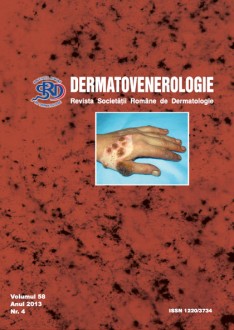The term ,,Lupus erythematosus” (LE) refers to a spectrum of diseases that vary in their course and prognosis. The three major forms of LE are: chronic cutaneous lupus erythematosus, subacute cutaneous lupus erythematosus (SCLE) and systemic lupus erythematosus.
(1) SCLE involves primarily the epidermis and upper dermis and is associated with anti-Ro/SSA autoantibodies and photosensitivity; the majority of patients do not have significant systemic disesase. (2) Lichen planus (LP) is an idiopathic inflammatory disease of the skin, hair, nails and mucous membranes, seen most commonly in middle-aged adults. (13) Hepatitis C virus (HCV) represents a major public health problem as a causative agent in developing chronic hepatitis, cirrhosis, and hepatocellular carcinoma.
In recent years it has become known that HCV induces a broad spectrum of extrahepatic manifestations, including some cutaneous ones such as LP. (15) The presence of cutaneous LP and oral lichen planus can potentially be used as a marker of HCV infection in asymptomatic patients, leading to proper diagnosis and early treatment and, possibly, a better prognosis of chronic hepatitis C.
Lupus erythematosus/lichen planus overlap syndrome is a rare disorder combining the clinical, histological and immunopathological features of both LE and LP. This is an infrequently reported condition, the majority of cases occurs between the ages of 25 to 45 with a slight female predominance. (29,30) The etiology is largely unknown, but its possibilities include an autoimmune, viral, and/or genetic cause. Drugs that may induce LE/LP overlap syndrome are isoniazide, procainamide, and acebutolol. (30)
We present the case of a 54 years old female diagnosed with SCLE (2000), LP (2012) and HCV (2012). Clinical aspects, therapeutic choices and course are presented in the article.
Clinical cases
SUBACUTE CUTANEOUS LUPUS ERYTHEMATOSUS ASSOCIATED WITH LICHEN PLANUS: OVERVIEW. PRESENTATION OF A CLINICAL CASE


